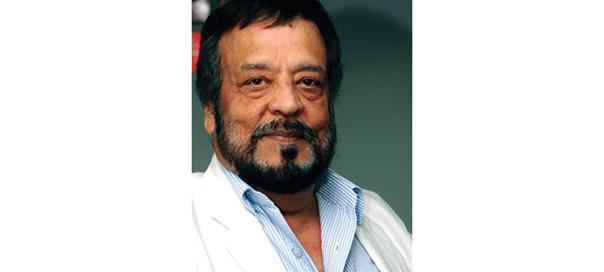The Indian government and the media must not ignore the recent blackout of two major television news channels in Uttar Pradesh as an aberration, because it can cast dangerous shadows on India’s Press freedom. This is nothing new in India; but it had never been so blatant, dictated by a state government. Both the government and media should quickly get to the bottom of the move by the UP government furious over legitimate criticism on the two channels, Times Now and India News.
The channels were just fulfilling their duty - totally expected and accepted in a democracy - by showing their audience how the UP government was neglecting the refugees of the Muzaffarnagar riots, but spending crores on the Saifai carnival, which was mere political muscle-flexing meant to demonstrate the dominance of the Yadav clan in UP politics. Most TV screens had juxtaposed on a split screen images of refugee kids without any warm clothes against the image of UP Chief Minister Akhilesh Yadav laughing and enjoying himself at the carnival which had Bollywood stars such as Madhuri Dixit and Salman Khan as performers. Sources say that it was the juxtaposition of images that made Yadav so furious.
Apart from highlighting the UP regime’s insensitivity towards the poor refugees suffering in bitter cold, Times Now had also been running an investigative story on UP legislators, most of them from the Samajwadi Party, on a multi-nation junket at tax-payers’ expense. News reports said that at a time when UP was struggling with the aftermath of the Muzaffarnagar riots, eight State ministers and nine legislators were on a ‘multi-nation study tour’ aimed more at sight-seeing. The 18-day sojourn included Turkey, Egypt, Italy, Greece, Britain, Netherlands and the UAE. Each politician was also reportedly carrying huge sums of money for shopping. The junket cost was estimated to be around Rs 1 crore, borne by the Samajwadi Party government.
The tour was ironically led by minister Azam Khan, who is in charge of the Muzaffarnagar district where thousands of refugees of the September riots were trying to survive the winter in temporary shelters. The TV channels also reported the strange reaction of Chief Minister Yadav and his ministers to media coverage. Yadav slammed the media for “negative coverage” of the Saifai carnival saying, “The media should apologise to me, to Netaji (Mulayam Singh, his father) for their reports on Saifai... Channels are questioning artistes who performed. I am the CM, ask me. Why question them?.” He also called the media “anti-Urdu” and opponents of “Lucknow’s tehzeeb”.
Yadav seemed totally unaware of or insensitive to the seriousness of the criticism, and was seen arguing with reporters that money spent on the carnival was much less than the reported figure of Rs 300 crore. His ministers were no less insensitive. Reacting to the news that more than 30 kids had died in the relief camps, one of them brushed aside the report, saying that such deaths can occur anywhere and that kids die while living in palaces too.
So when all the negative publicity about the politicians’ actions and reactions (that sometimes bordered on buffoonery) was broadcast again and again on TV channels and when reporters, especially from Times Now and India News, asked Yadav tough questions, he was openly seen fuming with anger. He demanded an apology from the media for not covering his carnival properly. And hours later, cable operators blocked the two channels, allegedly following a verbal instruction “from the top”.
There was no official word, but one report quoted the president of the Cable Service Consumer Protection Committee as saying, “The telecast of Times Now and India News has been stopped across UP because the CM was offended by their negative coverage of the Saifai Mahotsav.”
The TOI quoted an unknown cable operator, who requested anonymity, as saying that the two channels were blocked after phone calls from “higher-ups”. The report also spoke of similar phone calls going to operators in other UP cities. The channels, however, were available on DTH platforms, over which the state government does not have any control.
I hope the two TV channels lodged complaints, as advised by I&B Minister Manish Tewari. “We will take action if the channels complain to us. The complaints will be considered on merit, and if any illegality is found, we will take strict action against the erring MSOs (multi-system operators),” Tewari said.
It doesn’t mean that the Indian government has always protected the rights of the fourth estate. No journalist can ever forget the tactics used by the government in the 1960s and 70s against newspapers that were the only free media at the time, with the electronic media being run by the government. If any newspaper criticized the government then, it normally faced three threats: the first was a dictatorial reduction in the quota of subsidized newsprint for that newspaper; the second was stoppage of government-sponsored advertisements in the newspaper to hurt it financially; and if those two steps still did not prevent the newspaper from criticizing the government, the third step was to “pull the plug” or stop the supply of electricity to that newspaper’s office building during the night, when production and printing go on for the morning edition.
(Author/news analyst Ravi M. Khanna now freelances from New Delhi after a long stint with the Voice of America as its South Asia bureau chief)
Feedback: ravimohankhanna@gamail.com























